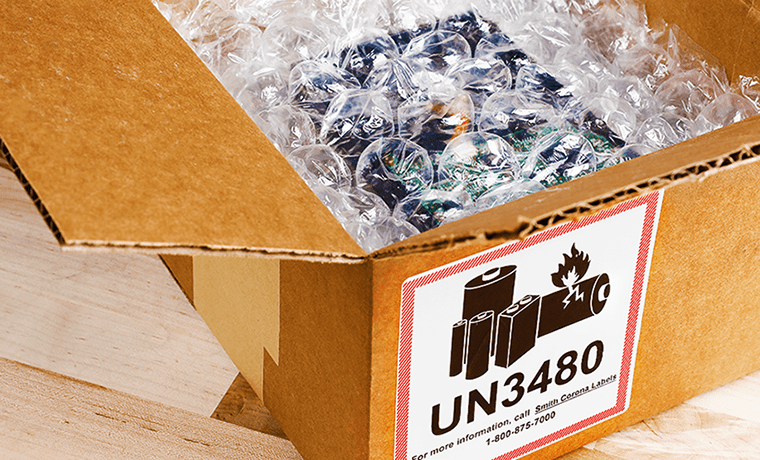Are Lithium Ion Batteries Dangerous Goods?
Lithium batteries have become an essential part of modern technology due to their high energy density and long-lasting power. However, with their benefits come potential risks and dangers, leading to questions about their classification under dangerous goods regulations and the necessary precautions for their transportation.
What Are the Regulations That Apply to Lithium Batteries?
Classification of lithium batteries plays a crucial role in determining how they should be handled during transportation. Lithium batteries are classified as dangerous goods, necessitating compliance with strict transport regulations to ensure safety. These regulations include specific requirements such as the UN number for shipping lithium batteries, which helps identify the type of lithium battery being transported.
Lithium batteries must be shipped following guidelines set by regulatory bodies to prevent accidents or hazards during transit. From packaging requirements to documentation specifications, adherence to transport regulations is vital to safeguard against potential risks.
When shipping lithium batteries, the UN number assigned to each type of battery must be clearly indicated on the packaging. This number aids in identifying the content of the shipment and ensures that appropriate handling procedures are followed throughout the transportation process.
How Should Lithium Batteries Be Shipped?
Shipping lithium-ion batteries requires strict adherence to guidelines to mitigate hazardous situations that could arise from improper handling. Hazardous considerations for lithium batteries encompass factors such as potential short circuits, thermal runaway, and flammability, highlighting the importance of following regulations to minimize risks.
Proper packaging, labeling, and handling are essential when transporting lithium-ion batteries to prevent damage and ensure secure shipment. Compliance with shipping regulations helps guarantee the safe delivery of lithium-ion batteries to their intended destinations.
The transportation of lithium cells and batteries is subject to specific regulations to maintain safety standards. Whether by land, sea, or air, these regulations dictate the proper procedures for packaging, labeling, and handling lithium batteries to prevent accidents and protect individuals involved in the transport process.
What Are the Dangers Associated With Lithium-ion Batteries?
Lithium-ion batteries pose various hazards that need to be addressed to ensure safe shipment and handling. The potential risks of lithium-ion batteries include thermal runaway, short circuits, and the release of hazardous substances, emphasizing the need for stringent regulations and compliance measures.
When shipping lithium metal batteries, it is crucial to follow specific requirements to mitigate potential dangers associated with these high-energy-density batteries. Adhering to regulations for the transport of lithium metal batteries helps reduce the risk of incidents that could harm individuals or damage property.
For air transportation of lithium batteries, compliance with International Air Transport Association (IATA) regulations is mandatory. These regulations outline safety measures, packaging guidelines, and labeling requirements to ensure the secure shipment of lithium batteries by air, minimizing the likelihood of accidents or mishaps.
Are There Specific Requirements For Transporting Lithium Batteries By Air?
Transporting lithium batteries by air involves adherence to specific guidelines and regulations to protect against potential risks associated with air travel. Implementing IATA guidelines for shipping lithium batteries by air is essential to ensure the safe and efficient transport of these potentially hazardous goods.
The 38.3 testing requirements for lithium battery transport focus on evaluating the safety and performance of lithium batteries during transportation. Complying with these testing requirements aids in identifying potential issues and ensuring that lithium batteries can be shipped safely without posing hazards to individuals or property.
Shippers of lithium ion batteries bear the responsibility of ensuring that proper protocols are followed to uphold safety standards during transportation. From packaging compliance to documentation accuracy, shippers play a crucial role in guaranteeing the secure shipment of lithium ion batteries in accordance with regulations.
Why Must Regulations Apply to Lithium-ion Batteries?
Maintaining safety standards for lithium batteries is paramount to prevent accidents, protect individuals, and preserve the environment. Compliance with dangerous goods regulations for lithium cells and batteries is essential to ensure that these potentially hazardous materials are handled and transported responsibly.
Adhering to transport regulations for lithium batteries is critical to mitigate risks associated with the transport of dangerous goods. By following proper procedures and guidelines, the likelihood of incidents or accidents related to the shipment of lithium batteries can be significantly reduced, promoting safety and compliance.
Conclusion
Lithium ion batteries have proven to be a game changer in the world of technology, providing power to a wide range of devices from smartphones to electric vehicles. However, it is important to remember that they are classified as dangerous goods due to the potential risk of fire or explosion if not handled properly. Therefore, it is crucial to follow proper safety guidelines when using and transporting lithium ion batteries. This includes making sure they are stored and handled correctly, avoiding extreme temperatures, and not puncturing or damaging the battery in any way.
Overall, while lithium ion batteries offer many benefits in terms of energy storage, it is essential to be aware of the potential risks associated with them. By taking necessary precautions and following safety protocols, we can continue to enjoy the convenience and efficiency that these batteries provide without compromising our safety.


